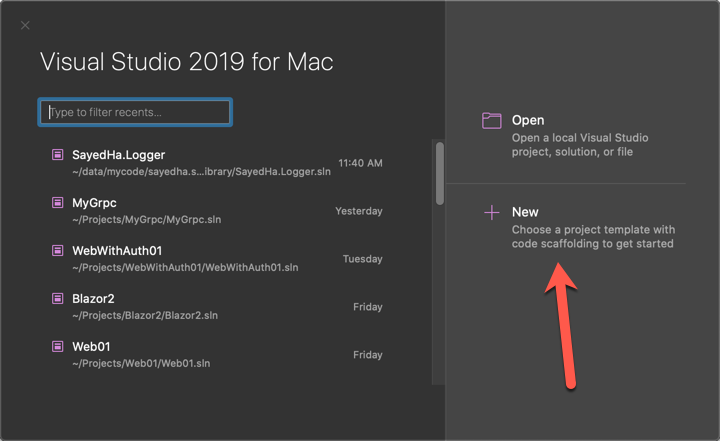
- #Visual studio for mac .net standard 2.0 for mac#
- #Visual studio for mac .net standard 2.0 pro#
- #Visual studio for mac .net standard 2.0 code#
- #Visual studio for mac .net standard 2.0 crack#
#Visual studio for mac .net standard 2.0 for mac#
To test things out, I copied the new Encodo.Core project file back to the main Quino workspace and opened the old solution in Visual Studio for Mac and JetBrains Rider.
#Visual studio for mac .net standard 2.0 code#
The Game PlanĪt this point, I had a shadow copy of a bunch of the core Quino projects with new project files as well as a handful of ad-hoc changes and commented code in the source files. NET Standard is a much more rewarding process than our previous attempt at porting to. I discovered all of these things using just VS Code and the command-line build. Quino.Data depends on, which references (again) as well as a few other things.I will probably have to copy/implement the WeakEventManager for now until we can deprecate those events permanently. There are only two references and these are used to implement a CollectionChanged feature that is nearly unused. I will have to move these references to a project and move creation of the CurrentCredentials, AnonymousCredentials and UserCredentials to a factory in the IOC. I changed those references to System.Drawing and Color, respectively-something I knew I would have to do. Encodo.Expressions references for Color and the Colors constants.If you don’t do this, the compiler complains about “ Duplicate ‘圜ompanyAttribute’ attribute” and so on. The only change required was to move project-description attributes that used to be in the AssemblyInfo.cs file to the project file instead (where they admittedly make much more sense). Encodo.Core compiles (almost) without change.(Right?)Įverything really seems to be coming together: even the documentation is clean, easy-to-navigate and has very quick and accurate search results. The API is so straightforward that I don’t even need to include descriptions for the commands above. That’s all I’ve used so far, but it was enough to investigate this brave new world without needing an IDE.


The dotnet command is really very nice and I was able to quickly build up a list of core projects in a new solution using the following commands: That way, I could be sure that I was really only including the code I wanted-instead of random cruft generated into the project files by previous versions of Visual Studio. Instead of re-using these projects, I figured a good first step would be to use the dotnet command-line tool to create a new solution and projects and then copy files over. Since it’s an older solution, Quino projects use the older csproj file-format: the one where you have to whitelist the files to include. NET Core to the more inclusive though still considerably cleaned-up API of. NET Core, but were encouraged when Microsoft shifted gears from the extremely low–surface-area API of.

At the time, we dropped our attempts to work with. It’s quite modern and well-modularized, but we still ran into considerable trouble when experimenting with. NET Framework solution that has seen continuous development and improvement. Everything installed easily and quickly and I was up-and-running in no time.Īrmed with 3 IDEs and a powerful command line, I waded into the task. I already had Visual Studio Code with the C#/OmniSharp extensions installed. I installed Visual Studio for Mac, the latest JetBrains Rider EAP and.
#Visual studio for mac .net standard 2.0 pro#
To keep me honest, I did all of my investigations on my MacBook Pro in MacOS.
#Visual studio for mac .net standard 2.0 crack#
I couldn’t help myself and took a crack at converting parts of Quino to. NET Standard 2.0 is finally publicly available as a preview release.


 0 kommentar(er)
0 kommentar(er)
